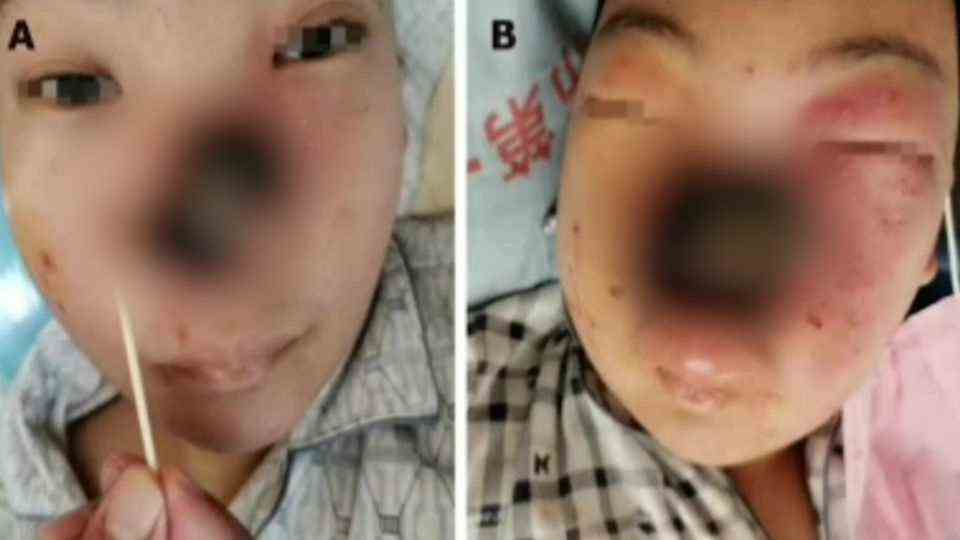Tension of the cranial sickle
After Covid-19: Osteopaths want to use a new therapeutic approach to alleviate olfactory disorders
Many people can no longer smell and taste properly after a corona infection.
© Dima Berlin / Getty Images
Covid-19 has many symptoms. One of the most common is the loss of the sense of smell. A disorder that lasts for months in some patients. Now osteopaths from Coesfeld want to have found a new therapeutic approach.
Suddenly you can no longer smell your partner, the food just tastes like porridge. The olfactory disorder is one of the most common symptoms of Covid 19 disease. According to the Robert Koch Institute (RKI), around one in five (19 percent) suffers from a disorder of the sense of smell and / or taste after an infection with Sars-CoV-2. A number that is likely to be underestimated due to the nature of the coverage. There are a number of studies that assume that more than every second infected person has at least temporarily something to do with such a disorder. Some cannot smell and taste properly again even after months.
The disorder of the sense of smell is a well-known phenomenon in medicine, which can also occur with other viral infectious diseases. But with Covid-19, other mechanisms seem to take effect than a stuffy nose. When analyzing such cases, a team of researchers from Harvard Medical School came to the conclusion that certain types of cells in the upper nasal cavity are particularly susceptible to infection.
They were able to detect the virus in so-called supporting cells that surround the nerve cells. And the immune response following the infection, the researchers said, could cause tissue to swell, but the olfactory cells remain intact. As soon as the swelling subsides, the sense of smell can return to normal. The degree of inflammation also plays a role in the severity of the odor disorder.
Is tension the cause of olfactory disorders?
But what if there is no improvement even after months? Such cases increased at the Center for Osteopathy in Coesfeld. The trauma surgeon and osteopath Dr. Oliver Wirtz reports to the star of more than 60 patients with this symptom. Many people who came to the center had already gone through a doctor odyssey and had given up hope that they could be helped. This is also due to the fact that olfactory disorders in connection with Covid-19 are often seen more as a blemish than a serious problem. “Patients are often misunderstood,” he says. These are serious restrictions.
The osteopaths set out to find the source of the symptom. They too initially assumed the cause was swelling of the mucous membranes, but then came to a completely different conclusion. Osteopaths look for tension in tissues and organs as well as disorders in function, among other things by feeling the skull through the oral cavity with the finger. They found something in common with all those affected. In all of them, says Wirtz, they were able to detect a disorder in the anterior skull base area, a tension in the cranial sickle. “We are therefore more likely to assume a mechanical fault,” says Wirtz.
The cranial sickle separates the two halves of the brain. If it becomes tense, this can lead to a blockage of the ethmoid bone, also known as the olfactory bone. Such tension is known, for example, from trauma surgery. They can sometimes occur after a traumatic brain injury and subsequently lead to impaired olfactory performance. The osteopaths now want to have established a connection between corona infection and such tension. It is unclear what triggers it, whether the infection will damage the membrane. A previous accident could also play a role.
Osteopathic treatment approach
Probably the cerebral sickle and dura mater, i.e. the hard meninges, tense up during the acute viral infection, says Wirtz. “We find similar findings in chemotherapy patients and patients who have been given long-term antibiotics,” he says. After the acute event subsided, this tension persists and restricts the natural movement of the ethmoid bone. Wirtz continues: “In osteopathy, ‘restricted mobility’ also means restricted blood flow and function of the organ; here the ethmoid and the olfactory fibers that radiate into the ethmoid.” So far there is no further scientific evidence for the osteopaths thesis.
Professor Alessandro Bozzato is Deputy Director of the Ear, Nose and Throat Clinic at the Saarland University Hospital. He is skeptical and says: “Of course, viral infections cause a multitude of possible symptoms. Muscular and skeletal problems are certainly part of a possibly complex symptom picture. However, I consider the ability to directly influence the skull or even paranasal sinus structures to be very daring and lacks a physiological basis.” In his experience, stress-related tension is an important point. “In my opinion, it is obvious that osteopathic procedures are helpful here and can have a positive effect on the central nervous system,” says Bozzato.

Effects after the first treatment
After their discovery, the osteopaths in Coesfeld treated the patients with the aim of relaxing the cerebral sickle and freeing the olfactory bone from its blockage. An approach that, according to Wirtz, has shown success. Once mobility has been restored, the connection between ethmoid and olfactory nerves is intact again, and the blood flow is again without any disturbance, an improvement quickly occurs. “In most patients, the olfactory performance improves by 50 percent after the first treatment,” reports Wirtz.
The osteopathic approach is one of various therapy options, says Wirtz. But even this treatment is not a miracle cure. The osteopaths could have helped many, but not all. The treatment did not work for two or three, according to Wirtz. In addition, patience is required even after the malfunction has been rectified. It can take up to six weeks for an effect to be felt. A so-called smell training is also beneficial in reactivating the senses.
Bozzato does this. The patients get household fragrances for this. You smell these fragrances intensely and consciously two to three times a day for about 20 seconds. “This activates the nerve cells in the nose,” Bozzato told im star-Interview. Unfortunately, it is not possible to predict for whom this will work well and to what extent it will be successful. “Unfortunately there are patients who do not recover or only partially recover. Some only take a few weeks, others many months.”



